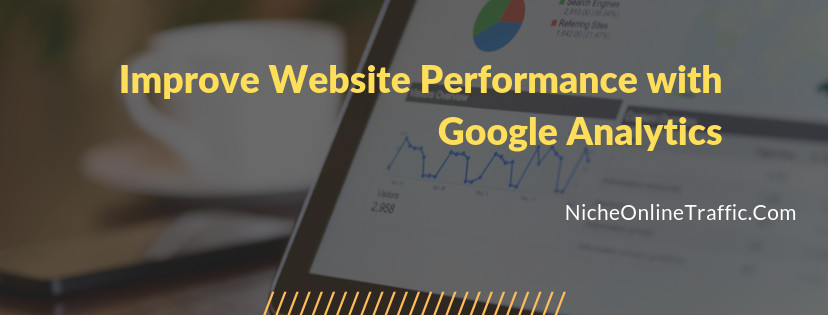Website data analysis is an essential activity for businesses serious about improving their website. This article will help you get up and running with website data analysis.

Having access to the backend data of your website provide lots of benefits. It gives you insight into user interactions and other vital information about your website. Such information helps you improve your website in various ways. Are you ready to dig deeper into website analytics? Keep on reading.
10 Steps for Analyzing Website Data
There are various types of strategies for analyzing and optimizing your website. Some of them are easy for newbies to handle, while others might need some level of experience in working with analytics.
This discourse assumes that Google Analytics is up and running on your website. You can check the Google Analytics implementation guideline if you do not have Google Analytics on your site already.
Below are a few strategies that are geared towards the average Analytics user.
- Log in to Analytics and create Objectives, Goals, and KPIs
You should first take an in-depth analysis of your website frontend before you go about creating goals and setting KPIs. What do you want to achieve? What action would you like the user to take? The answers to these questions will help you set your objectives, goals, and KPIs correctly.
- Examine the Traffic Sources Report’
You can get vital information about your website performance from the channel overview. You can also check the traffic source report for details. You will want to find out the primary sources of your website traffic. Are you using paid traffic, is there decent traffic from Google? Are your social media channels bringing visitors to your website? You may also want to take a closer look at the bounced traffic, which is a vital indicator of the quality of your site content.
- New Visitors vs. Returning Visitors
The number of new and the returning visitors are excellent metrics for measuring the acquisition of new audience and loyalty of the existing ones. Most websites have figures ranging from 60:40 to 80:20 for new vs. returning audience ratio. It all depends on your type of website and your marketing mix.
- The activity of Visitors Using Mobile device vs. Visitors Using Desktop
Your site will have visitors that uses both desktop and mobile devices. Both mobile and desktop users must have an excellent user experience on your website. You can determine the user experience by checking the bounce rate, page views, etc., from both Desktop and Mobile device users.
- Are your landing pages converting?
You should have a goal before setting up landing pages, and consistently monitor the landing pages to know their status. Are your landing pages converting? Is the bounce rate of your website excessively high? Monitoring your landing page will help you tweak it to perform better. You can see use the see Entertaining landing page guide and In-depth landing page guide to learn how to tweak your site for conversion.
- Tweak your SEO and Paid Search Strategy.
Although SEO is the ultimate strategy for getting traffic, most businesses complement SEO strategy with paid traffic. Analytics give the website owner meaningful insight into the performance of both SEO and paid traffic strategy. The information that Google Analytics presents help businesses target the right keywords and optimize the site for the best results from both organic and paid search.
- Monitor and optimize your conversion rates
It is impossible to optimize your landing page when you do not know how it is performing. That is why you should check if your eCommerce and conversion goals are set up correctly. Once you have set your conversion metrics in place, you can determine whether your landing page is performing optimally based on your industry average. The conversion metrics will let you know if you need to tweak your website to increase conversion or not.
- Review the performance of your campaigns
Depending on your revenue model, you may decide to run campaigns to promote your own product or an affiliate product. It is good practice to monitor your campaigns to help you know if your traffic source is performing optimally or not. This is essential to help you avoid wasting your advertising budget on a promotional method that sucks.
- Check the performance of your funnel trajectory
Your funnel is arguably the most crucial factor when it comes to optimizing your site for conversion. Analytics helps you detect when there is a significant drop off in specific steps of your funnel. Such drop-off is a vital signal that enables you to identify technical problems in the funnel trajectory. If there is none, you may want to adjust your funnel pathway to remove the underperforming steps. In essence, Analytics can help you convert more customers in your funnel.
- Use analytics intelligence
This machine learning feature allows you to ask questions and receive correct answers without checking your analytics data. Here is a guide for Analytics Intelligence questions. Besides, it calls your attention to vital analytics data you might have missed. With analytics intelligence, website owners can access valuable information for optimizing various aspects of a website to enhance performance.
The information above will improve your analytics skills required to optimize your website performance. Before you go neck-deep into the world of analytics, note that the data is not 100% accurate, but good enough for your analytics requirement. Also, it is better to focus on distributions of data rather than averages. Go and put your newly found analytics knowledge to test, and enjoy the new world of data-driven website enhancement.

0 Comments